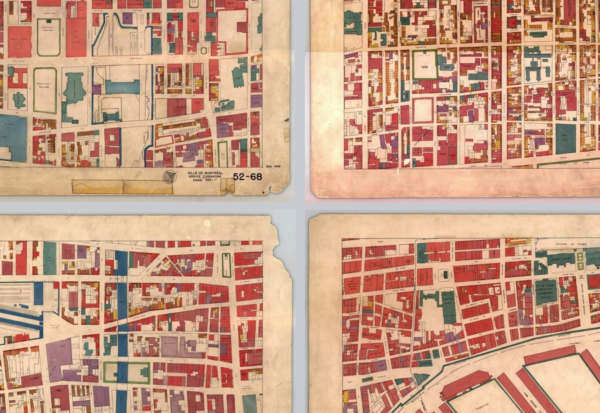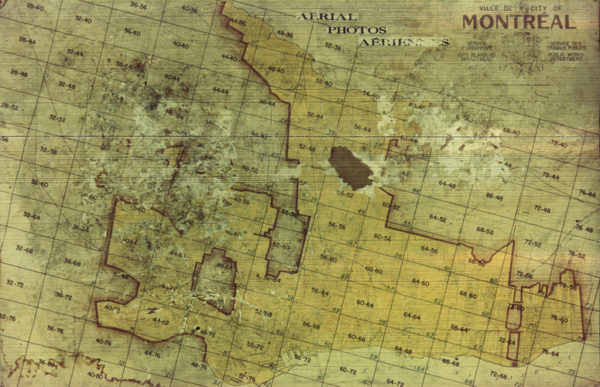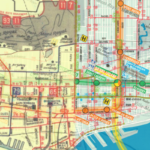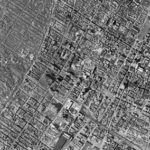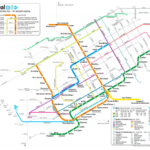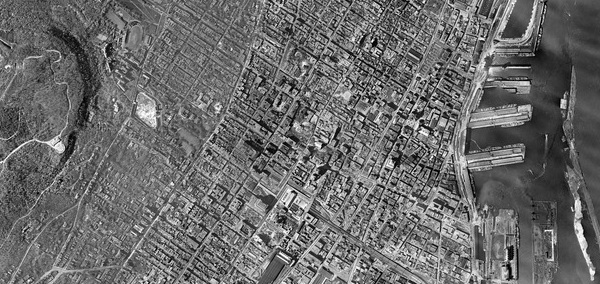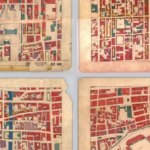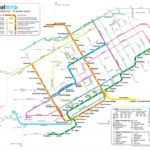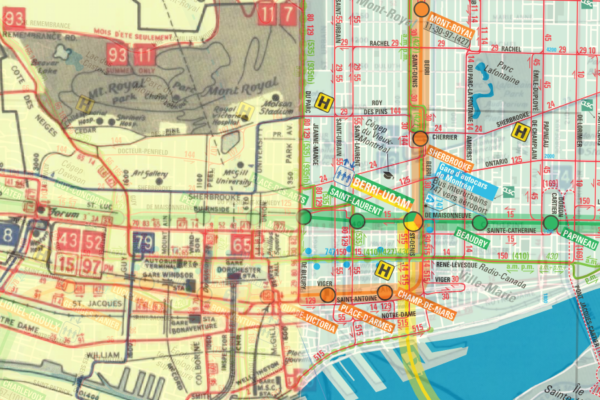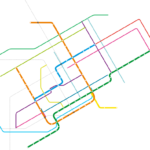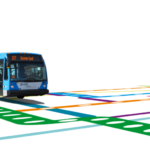Another historical Map: 1949 Montreal Land Use plan
Saturday, March 23rd, 2013This blog wasn’t really meant to become about historical map mashups, but with the city of Montreal (and the Bibliothèque et Archives nationales du Québec) releasing all this interesting imagenary, I made the third map app within as many weeks. This one is a 1949 Land Use plan (source), showing a detailled view of the buildings, many of them named, their uses, street names. This map is not stitched together, and not overlayed with a modern view – it’s the raw scanned pages arranged in a grid. This makes for a primary source, not only showing the data of the map, but also showing the age of the paper it’s on, pencil scribbles, creases and tape fixes. The result looks like this:
Again there’s a full screen version, which can be found here. The 9 principal colors correspond to the following:
- Jaune: résidentiel : unifamilial
- Orange: résidentiel : duplex
- Brun: résidentiel : triplex
- Rouge: commerce
- Rose: industries légères (alimentation, entreposage, vêtements…)
- Violet: industries lourdes (mécanique, chimie, fonderie…)
- Bleu: chemin de fer
- Vert: parcs
- Gris-vert: institutions (administration, écoles, églises…)
Note that some areas are not colored in: Those were not part of the city of Montreal, but independent municipalities. Montreal had quite strange boundaries and a weird shape, reaching the water in the North, but with many cut-outs all around. The city has consolidated much more, but some of those small cities (like Westmount, and TMR) are still holding on to their independence today.
All these map mashups I’ve showcased the last couple of weeks are a work in progress. I hope there will be one master map one day overlaying all the information in one app. This involves the major help of some pixel magicians who’ve been stitching and cleaning images (in particular mare and Luc). I thank them for all their work and hope for the continuation of these projects.
